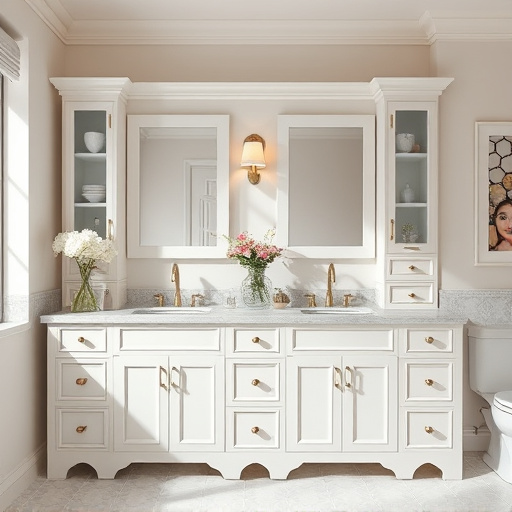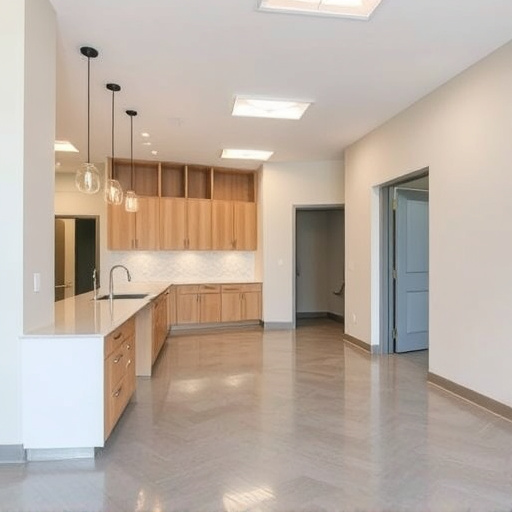When planning tile flooring, consider room purpose and aesthetics to avoid common mistakes. Choose suitable tile types (ceramic, porcelain, marble, stone) for durability, maintenance, and price. Proper subfloor preparation is critical; clean, smooth, level subfloors prevent tile issues and repairs. Use high-quality grout and tools for precise application, preventing water penetration and enhancing longevity.
“Elevate your home renovation with expert insights on common tile flooring pitfalls. From selecting unsuitable tiles for specific rooms to overlooking critical subfloor preparation, these mistakes can make or break your project. Learn why choosing the right tile type is key to durability and aesthetics. Discover the importance of proper subfloor treatment for a solid foundation. Understand grout installation techniques that ensure longevity and aesthetic appeal. Master these tile flooring essentials to transform your space without common pitfalls.”
- Choosing the Wrong Tile Type for Each Room
- Neglecting Proper Subfloor Preparation
- Improper Grout Installation Techniques
Choosing the Wrong Tile Type for Each Room

When planning a tile flooring project, one common mistake homeowners make is selecting tiles that don’t suit the room’s purpose or aesthetic. Each room in your home has unique characteristics and requires a tile type tailored to its function and style. For instance, bathroom tiles should be moisture-resistant and easy to clean, while kitchen tiles must withstand spills and high traffic.
Choosing the wrong tile type for your tile flooring can lead to issues like water damage, slipping hazards, or an aesthetically discordant space. In a home renovation or residential renovations, it’s crucial to understand the difference between ceramic, porcelain, marble, and stone tiles, each with varying levels of durability, maintenance requirements, and price points. Selecting tiles that align with your interior painting schemes and overall design goals will ensure a harmonious and functional result.
Neglecting Proper Subfloor Preparation

Many homeowners make the mistake of skipping over subfloor preparation when installing tile flooring, but this step is crucial for a successful and long-lasting tile flooring project. A proper subfloor is the foundation of any floor, and its neglect can lead to future issues like uneven tiles, gaps, or even damaged underlayment. Before laying down your tiles, ensure the subfloor is clean, smooth, and level. This process involves removing any old flooring, repairing holes or cracks, and ensuring the surface is free from debris. In residential renovations and bathroom remodel projects, proper subfloor preparation often gets overlooked, but it’s a critical step to avoid costly repairs later.
Inadequate subfloor preparation can cause tiles to settle unevenly, leading to visible gaps between them. Moreover, an unprepared subfloor may not be able to withstand the weight of the tiles and the traffic it will endure, potentially resulting in warping or damage over time. For home improvement services, paying close attention to subfloor prep ensures that your new tile flooring looks as good as it functions, providing a sturdy base for years of enjoyment.
Improper Grout Installation Techniques

When undertaking any tile flooring project, whether for a bathroom remodel or creating functional spaces within your customized home renovations, proper grout installation is paramount. One of the most common mistakes homeowners make is using the wrong tools or applying grout incorrectly. Grout is not just a filler; it’s a crucial component that seals the joints between tiles, preventing water penetration and ensuring a sleek, durable finish.
To avoid this pitfall, invest in high-quality grout and tools designed for precise application. Follow manufacturer instructions carefully during the mixing process to achieve the right consistency. For tight spaces or intricate designs, consider using a grout bag instead of a spatula, as it allows for more control and reduces messiness. This level of attention to detail will contribute to the longevity and aesthetic appeal of your tile flooring project.
When undertaking a tile flooring project, avoiding these common mistakes is essential for achieving a long-lasting and visually appealing finish. From selecting the right tile type for each room to ensuring proper subfloor preparation and mastering grout installation techniques, each step plays a crucial role in the final result. By steering clear of these pitfalls, you can ensure your tile flooring not only looks stunning but also stands the test of time.














